OCHUM COMMUNE, Ratanakkiri province – Perched on stilts 2 meters off the ground, a bamboo hut stands out amid homes of unpainted wood. A sarong, a belt and a pair of boxer shorts hang out to dry over the porch railings. This isn’t your average bachelor pad.
In these hills of Ratanakkiri, indigenous Kreung tribes traditionally build a girl or boy their own hut when they come of age.
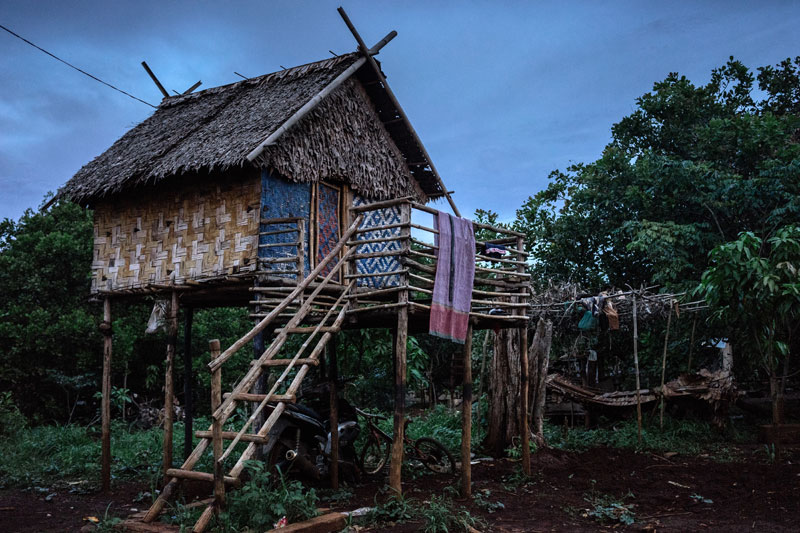
Known as “nam am berk” in the Kreung language, these huts give adolescents privacy to invite—and be intimate with—potential spouses, while teaching them independence before starting their own families.
“Boys build them high; girls build them short. They play around with all kinds of music, then they become boyfriend and girlfriend,” said Sman Kanut, 54, who was among the last generation to grow up with the so-called “love huts.”
“They don’t live with their parents as it would disturb them. It’s quite different from other cultures,” he said.
But modernization—and Khmerization—is piercing this once secluded community, 10 km from the provincial capital of Banlung. The villagers hadn’t seen a hut in over a decade.
“The custom is almost gone now,” Mr. Kanut said.
That is, until a boy decided to build one.
Seventeen-year-old Degn Saov may seem an unlikely pioneer of a Kreung renaissance. He likes South Korean pop music, football and math, though he claims he’s no good at it.
Dressed in jeans, a black and white jacket, and a krama, he chose a braided gold belt to complete his outfit. “I chose gold because it looks sexy and stylish,” he said. “This is my own style, I don’t copy anyone else.”
Saov’s family is one of meager means, their riches amounting to three pigs, eight chickens, two cows and a small plot of farmland on a sloping hill.
About 10 months ago, Saov started scouring the forest for hut materials and spent 50,000 riel (about $12.50) on nails and paint. With help from his brothers, he took two months to build the hut in front of his family’s home, separated by a dirt path.
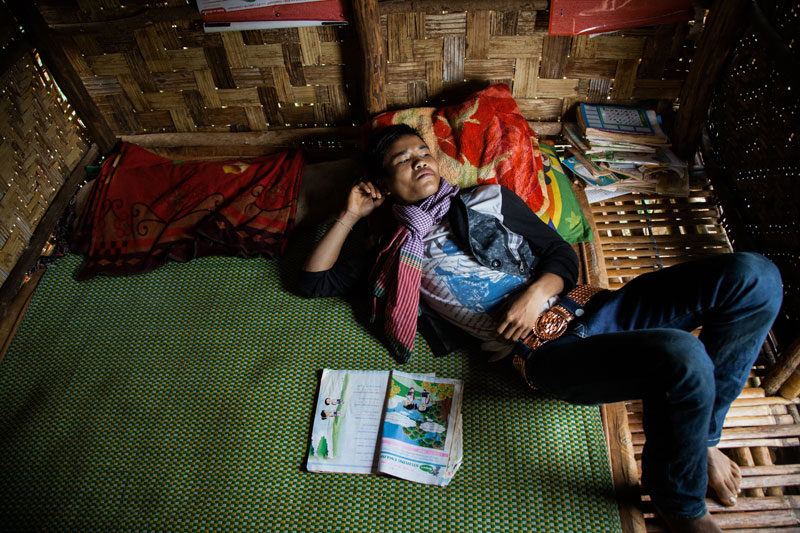
Keeping to the traditional style of woven bamboo walls and dried leaf roof, Saov painted the front with blue, white and red geometric patterns.
“I did the decoration by myself,” the eighth grader said.
Inside, it’s barely large enough for him to lie across the thin mattress taking up the entire floor. His school schedule tacked on one wall, plastic bags of clothes hanging on another, the decor is brightened by a yellow flower, a gift from his brother.
At night, a blue mosquito net hangs over the mattress as he reads books under a lone fluorescent light, powered by an electric wire strung from his family’s house.
“I wanted to live by myself. I like it,” he said. “A long time ago people built it, and I wanted to practice it because I’m concerned that we are going to lose our culture.”
A dating custom where premarital sex is common and girls spend nights in boys’ huts would be scandalous in most Southeast Asian societies. Kreung couples, however, are encouraged to cohabitate before the boy asks permission from the girl’s parents to wed her.
“Before, all the villages were quite far from each other. When a boy was interested in a girl, he could stay in her hut and have sex,” Saov said. “To have sex with each other before marriage, it’s kind of like ‘booking’ her for himself.”
Saov, the third of seven children, says he’s not thinking about marriage yet. “I don’t have a girlfriend yet,” he said, laughing.
And he says he’s a virgin. “I’m not involved with sex yet,” he said.
“If a girl comes to visit me, I would say welcome. But first we have to be able to talk to each other,” he continued. “At least five girls have come to visit me here in my hut. We only talked to each other and I’m not interested in any of them—I just treat them as my sisters.”
But Saov’s hut is a rarity: Commune chief Khan Savy said she knows of only a few bride and groom huts in the area.
“There are a few still practiced in some villages,” Ms. Savy said, adding that she believed they were mostly maintained so that tourists could come look at them. “There are no more boys and girls living in the huts.”

Tong Kropu is among five majority Kreung communities scattered in Ochum district’s Ochum commune. Before 1991, it had only seven families, all living in bamboo homes.
Today, the community stands at 366 inhabitants, sprawled further up the hill and inching closer to the asphalt road that leads to Banlung, completed last year.
The village still has no electricity—people use battery-powered generators to power light bulbs when they’re away from the campfire—and the villagers bathe and drink water from a nearby spring. For decades, the families lived off slash-and-burn subsistence farming.
But in the early 2000s, the farmers shifted to cash crops like cashew nuts, and used their new income to build Khmer-style wooden homes.
“People changed their house style when they had some money from the cashew nut plantation,” said Vin Sokkhim, 32, whom community members call the village chief. “The hut is very comfortable but it can only stand for seven years. We changed from huts to wooden houses because we were concerned about fire.”
Similarly, bride and groom huts became a thing of the past.
“Before the Pol Pot regime, each family had to build one [hut] at least for themselves. Later on, almost no one did because the regime made people live communally. After the regime ended in 1979, we started the custom again, but many Kreung turned to Khmer culture,” Mr. Kanut said.
“Another part of it is caused by development. People learn how to use technology such as mobile phones and with it they can communicate better, so if they need to catch up with each other, they just call or meet in town or at any restaurant.”
Vin Chok, 24, married an ethnic Khmer man and said much of their courtship happened once the two exchanged telephone numbers.
“My husband flirted with me by phone,” she said.
Like many isolated indigenous communities, Tong Kropu bypassed landlines altogether. Today, most of the younger villagers have mobile phones, and a handful of teens even tote smartphones. They take turns charging them at the battery-powered generators.
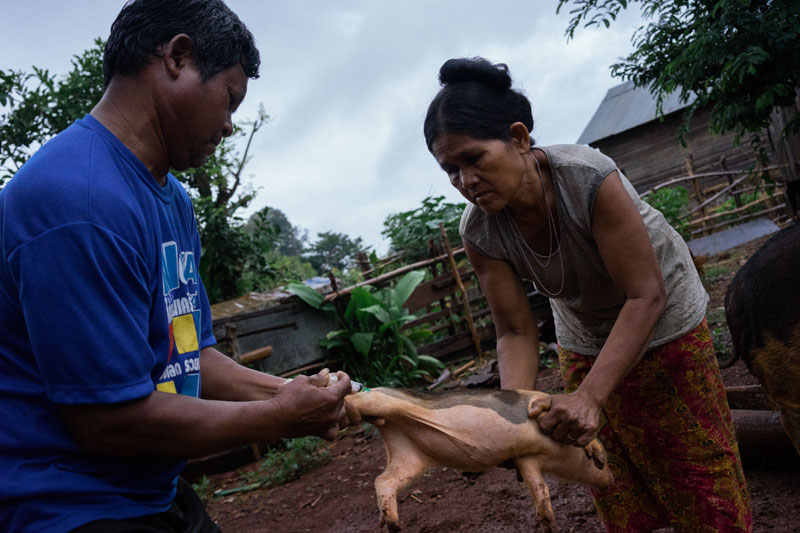
Roem Bagn remembers waiting for Vin Chroeng to walk for three hours to visit her hut.
“After the [Khmer Rouge] regime, I lived in the hut and I met my husband in 1979. I was about 15 years old,” said the 50-year-old grandmother.
She’s ethnic Kreung, he’s ethnic Tampuon, and their villages lay 10 km apart.
“Sometimes, I would finish my work at about 4 or 5 p.m. I would walk to her village,” said Mr. Chroeng, 60. “I spent the night there and walked back home during the day.”
Her hut was about 6 square meters. “No windows, only a door,” Mr. Chroeng recalled. And Ms. Bagn shared it with a few other girls.
“All the girls were almost the same age as me and wanted to spend the night together even though each girl also had her own hut,” she said.
Then one day, at a funeral ceremony in her village, she caught Mr. Chroeng’s eye.
“I first met her at the village ceremony and started to get interested in her,” he said.
Given the distance, Mr. Chroeng’s visits meant he had to stay overnight. “No matter if I had friends sleeping with me, he could still sleep beside us,” Ms. Bagn said.
The only exception, they said, was when they wanted to have sex—then they would politely ask her friends to leave.
There are no expectations about how long a future bride or groom should live in their huts before deciding to marry. “It depends on us, whenever we want to marry, in a year or in a few months as a couple,” Ms. Bagn said.
“We love each other. Then I asked our parents and decided that we were going to be together,” Mr. Chroeng said.
But times have changed. “Before, we could go out for walks very peacefully, but now it’s different. We are not afraid of animals but we are afraid of bad people,” Mr. Chroeng said.
“I have a feeling our culture is going to be lost as people learn not to help each other anymore,” he said. “People start to lose solidarity, lose land, forest. We used to farm in one field together as a community,” he added. Now, each family tends to its own plots.
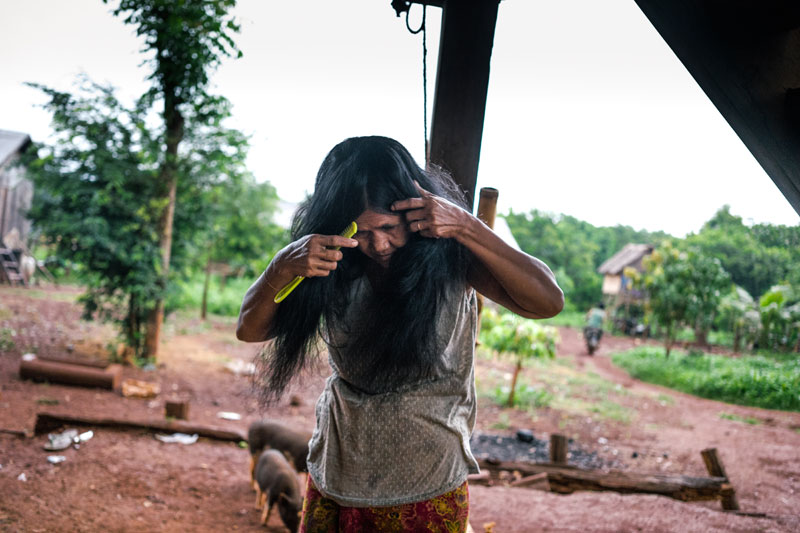
Yorg Huch was 29, still unmarried, and living in her hut when a man—tall, thin, with wavy locks—visited her. He was in her village staying with relatives.
“During the day, he worked at the farm and he spent the night with me, without marriage,” remembered Ms. Huch, now 43. “We lived together for about 10 months.”
“He loved me, so we decided to get engaged,” she said, and she was soon carrying his child. But then, Ms. Huch recalls, his behavior changed. “He was too violent,” she said, reluctant to be more specific. He left before the baby was born.
In the 14 years since that separation, Ms. Huch heard that he visited the village once, to see his relatives. He did not visit her.
“Since he left, I’ve been doing fine,” she said. “If he loved me I would love him back, but he did not, so neither should I.”
Ms. Huch now lives with their daughter, and despite several suitors declaring their interest in the years since, she no longer wants to marry. Now, their daughter is of dating age herself.
“I don’t know if my daughter has a boyfriend—he hasn’t come to my home yet,” Ms. Huch said.
But she’s certain of one thing: “I’m not going to build a hut for her. We have a big house now and I’m living alone so I can share some space with her,” she said. “I don’t want her to live away from me.”
Men abandoning women before marriage is among the reasons bride huts have declined, though those cases are rarely reported, according to Mr. Sokkhim.
When it does happen, the community relies on loose tribal customs to address it.
“If the man wants to end the relationship without marrying the girl, he has to pay a penalty of a container of wine,” said Mr. Kanut, the older villager. The fine can also come in the form of livestock, he added. However, Ms. Huch said they never punished the man who left her.

Degn Kmao, Saov’s 20-year-old older brother, still lives in their family home, a dark, 9-square-meter house fashioned from roughly hewn wooden planks and rusting tin roofs, shared among 10 family members.
“I used to get jealous of my brother,” said Mr. Kmao, who sleeps on a green mat that he shares with his sisters. He plans to build a groom hut for himself, but hasn’t found the time.
“It’s good to have our own hut. We would not be shy with our parents whenever we have any girls visit,” Mr. Kmao said. “We need to talk to each other—privacy is not only for when we have sex.”
These days, though, he’s too busy farming with the rest of the family, planting rice a 15-minute walk from the village through overgrown shrub and cashew trees.
Taking a break from farming, Saov’s father said he liked that his son had rekindled the hut tradition.
“I am so happy to see my son enjoying time with his friends in the hut. My older son, he wants to do it too when he is free,” Plok Degn, 52, said between drags of his cigarette.
Mr. Degn also had a groom hut before he was married. But while he’s pleased his son is carrying on the custom, he said he wouldn’t allow one for his daughters.
“To build the hut for the son, it’s fine. But to build it for the daughter, I don’t think it’s safe for her—it’s better to keep her with the family,” he said. “We cannot expect it to be as good as before. Modern society changes things.”
That’s bad news for his pre-teen daughters, who already say they want their own huts.
“I want a grass hut because it’s beautiful,” said 13-year-old Degn Poeuch, one of Saov’s sisters. “If it’s built close to my parents’ house, it wouldn’t scare me to live there.”
Like her brother, though, she’s hardly thinking about sex or spouses. She would happily invite her female friends over, she said. But boys? “No,” she answered shyly.
Asked if their brother could find a wife through the hut, Saov’s siblings laughed. And might as well—Saov says he isn’t looking to settle down for another year or two—at least until ninth or tenth grade, he said.
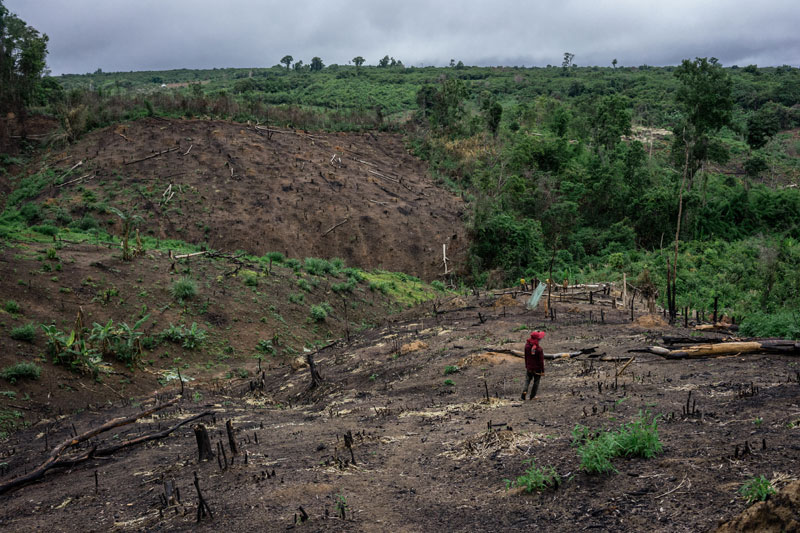
But in his hut, one wall is decorated with two posters of the same image, advertising a lucky draw. A couple dressed in Khmer wedding attire beam in apparent celebration of having won a tower of soda cans.
“I want to marry and dress like them in the future,” Saov said. Khmer style, he said, is all the rage these days.



